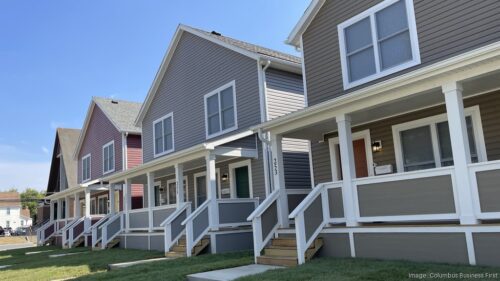The United States is facing a significant affordable housing crisis that has worsened over the last few decades. This issue affects millions of Americans across socioeconomic backgrounds and regions, creating a ripple effect that exacerbates income inequality, homelessness, and social instability. Despite being one of the wealthiest nations in the world, the U.S. has consistently failed to ensure adequate access to affordable housing for all its citizens.
What is Affordable Housing?
Affordable housing is typically defined as housing that costs no more than 30% of a household’s gross income. This includes rent or mortgage payments, as well as utilities. When people spend more than this threshold, they are considered “cost-burdened,” and their financial stability is jeopardized, leaving little room for necessities such as healthcare, education, and savings.

However, the reality for many Americans is that housing is far from affordable. Nearly half of renters in the U.S. are cost-burdened, with millions of families spending upwards of 50% or more of their income just to keep a roof over their heads.
Key Causes of the Crisis
Several factors have contributed to the shortage of affordable housing in the U.S.:
- Stagnant Wages: While the cost of housing has soared, wages for most Americans have remained relatively stagnant. The minimum wage, in particular, has not kept up with inflation or the rising cost of living in major cities. Many working-class Americans simply do not earn enough to afford even modest housing in the areas where jobs are available.
- Rising Real Estate and Rental Prices: Over the past few decades, real estate prices have skyrocketed, particularly in urban areas. Gentrification in cities such as San Francisco, New York, and Los Angeles has led to the displacement of lower-income families, driving them out of their neighborhoods as rents and property values increase. The high demand for housing in these regions outpaces supply, further inflating costs.
- Insufficient Housing Stock: The supply of affordable housing has not kept pace with demand. Many developers prefer to build high-end or luxury apartments, as these promise higher profits. Additionally, there has been a decline in federal support for housing programs, such as public housing or subsidies, that help low-income families secure affordable living spaces.
- Zoning Laws and Regulations: Restrictive zoning laws in many cities prevent the construction of multi-family housing units or smaller, denser developments that could offer more affordable options. Zoning policies often favor single-family homes, which are typically more expensive, limiting the availability of cheaper alternatives like apartments, duplexes, or accessory dwelling units.
- Shrinking Federal Assistance: Federal programs designed to support low-income housing, such as the Section 8 voucher program or the construction of public housing units, have faced budget cuts for years. As a result, the demand for assistance far exceeds the available resources, leaving many families on waiting lists for years or without help at all.
The Human Toll
The lack of affordable housing has far-reaching consequences for individuals, families, and communities. Those who spend a significant portion of their income on housing often face difficult trade-offs, such as cutting back on food, healthcare, or education. This puts financial pressure on families, making it harder for them to save for emergencies or invest in their future.
Moreover, the lack of affordable housing is one of the leading causes of homelessness in the U.S. The National Low Income Housing Coalition (NLIHC) estimates that the country is short over seven million affordable and available rental homes for extremely low-income renters. This has pushed many people onto the streets or into substandard living conditions, including overcrowded apartments or unsafe housing environments.
Potential Solutions
Addressing the affordable housing crisis will require coordinated efforts from policymakers, developers, and communities. Some potential solutions include:
- Increased Federal and State Investment: Governments at both the federal and state levels need to invest more heavily in affordable housing programs. This could include funding for public housing, rent subsidies, and tax incentives for developers to build affordable units.
- Inclusionary Zoning: Cities can adopt inclusionary zoning policies, which require developers to include a certain percentage of affordable units in new developments. This can help ensure that a portion of new housing remains accessible to lower-income residents.
- Expanding Housing Vouchers: Expanding the Section 8 housing voucher program could provide immediate relief to millions of low-income renters, allowing them to access better housing in more desirable locations.
- Reforming Zoning Laws: Local governments can ease restrictive zoning laws to encourage the development of more affordable housing options, such as multi-family buildings, smaller apartments, and mixed-use developments.
- Rent Control and Tenant Protections: Implementing or strengthening rent control laws can help stabilize housing costs in areas where rents are rising rapidly. Stronger tenant protections, such as eviction moratoriums or rent freezes, can also help prevent displacement and homelessness.
A final word…
The affordable housing crisis in the U.S. is a complex and multi-faceted issue that demands urgent attention. As housing costs continue to outstrip wage growth and housing supply falls short of demand, millions of Americans remain at risk of financial instability and homelessness. Addressing this crisis will require bold, innovative solutions that prioritize the needs of low- and middle-income families, ensuring that safe, stable, and affordable housing is within reach for all.
Recent transactions with Trinity Street Capital Partners:
https://finance.yahoo.com/news/trinity-street-capital-partners-announces-110000137.html
Reach out to Trinity Street Capital Partners for construction financing:

